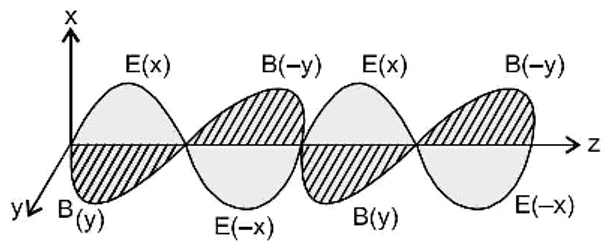Test: Characteristics of EM Waves - JEE MCQ
10 Questions MCQ Test - Test: Characteristics of EM Waves
The speed of electromagnetic waves in free space is given by  .
.
Here μ0 is ___________and ε0 is ________________ of free space.
Here μ0 is ___________and ε0 is ________________ of free space.
Which region in the electromagnetic spectrum will have the highest speed?
Which region in the electromagnetic spectrum has the highest frequency?
In electromagnetic waves the ratio of amplitudes of electric field and magnetic field is equal to
Which of the following is not a use of electromagnetic wave?
Which colour of the visible spectrum has the greatest wavelength?
The electric field for an em wave is: E = E0sin[(12 x 1015 t – 4 x 107 x)]. What is the speed of the em waves?
Choose the correct sequence of the radiation sources in increasing order of the wavelength of electromagnetic waves produced by them.
If E and B represent electric and magnetic field vectors of the electromagnetic wave, the direction of propagation of electromagnetic wave is along




 i.e., (E×B) in z− direction.
i.e., (E×B) in z− direction.















